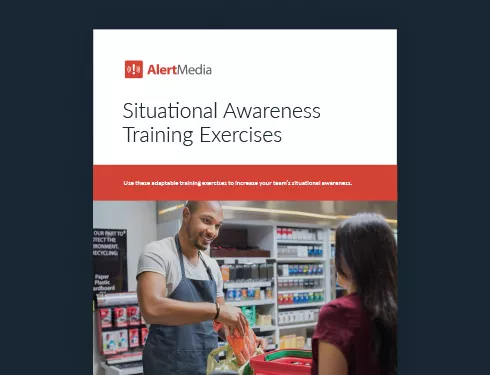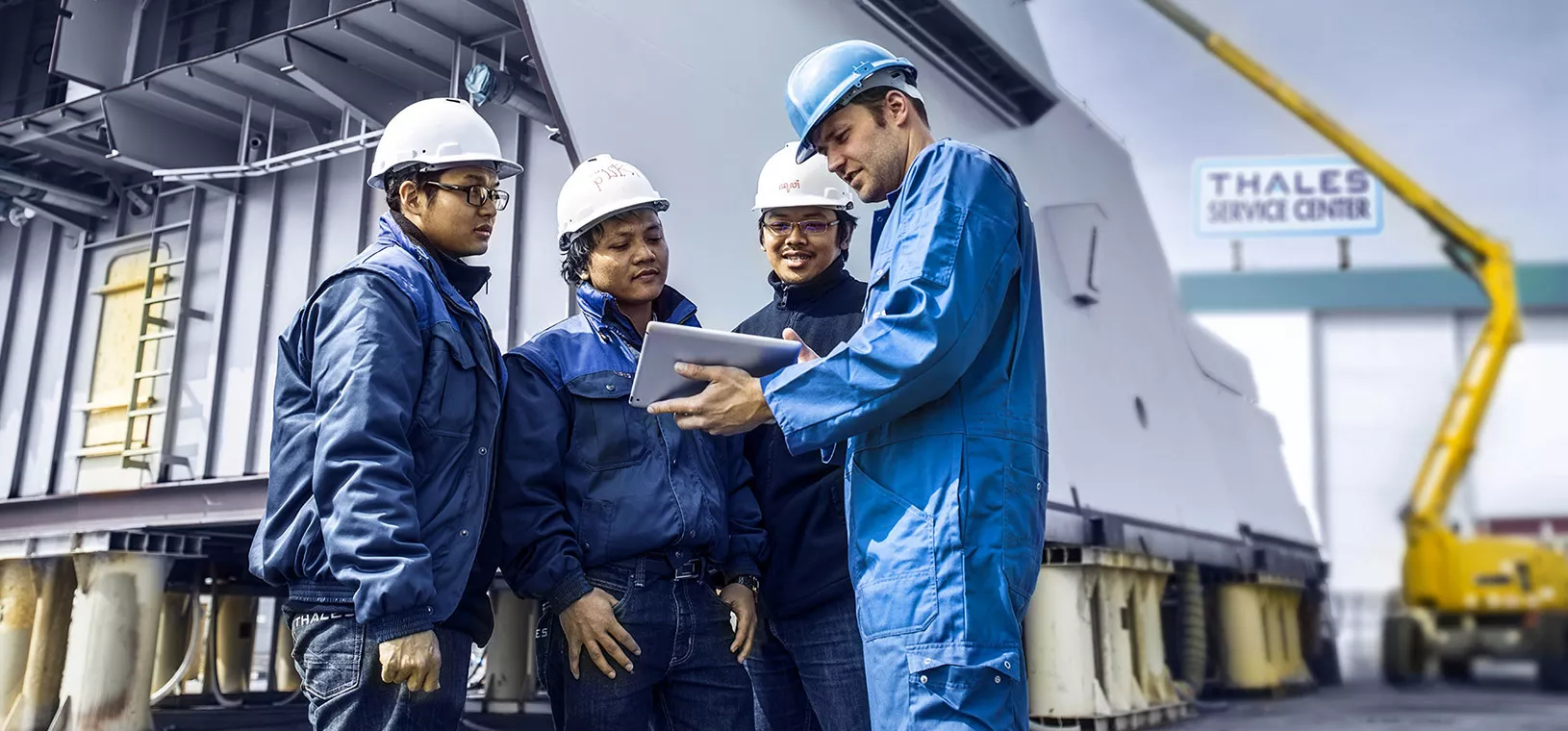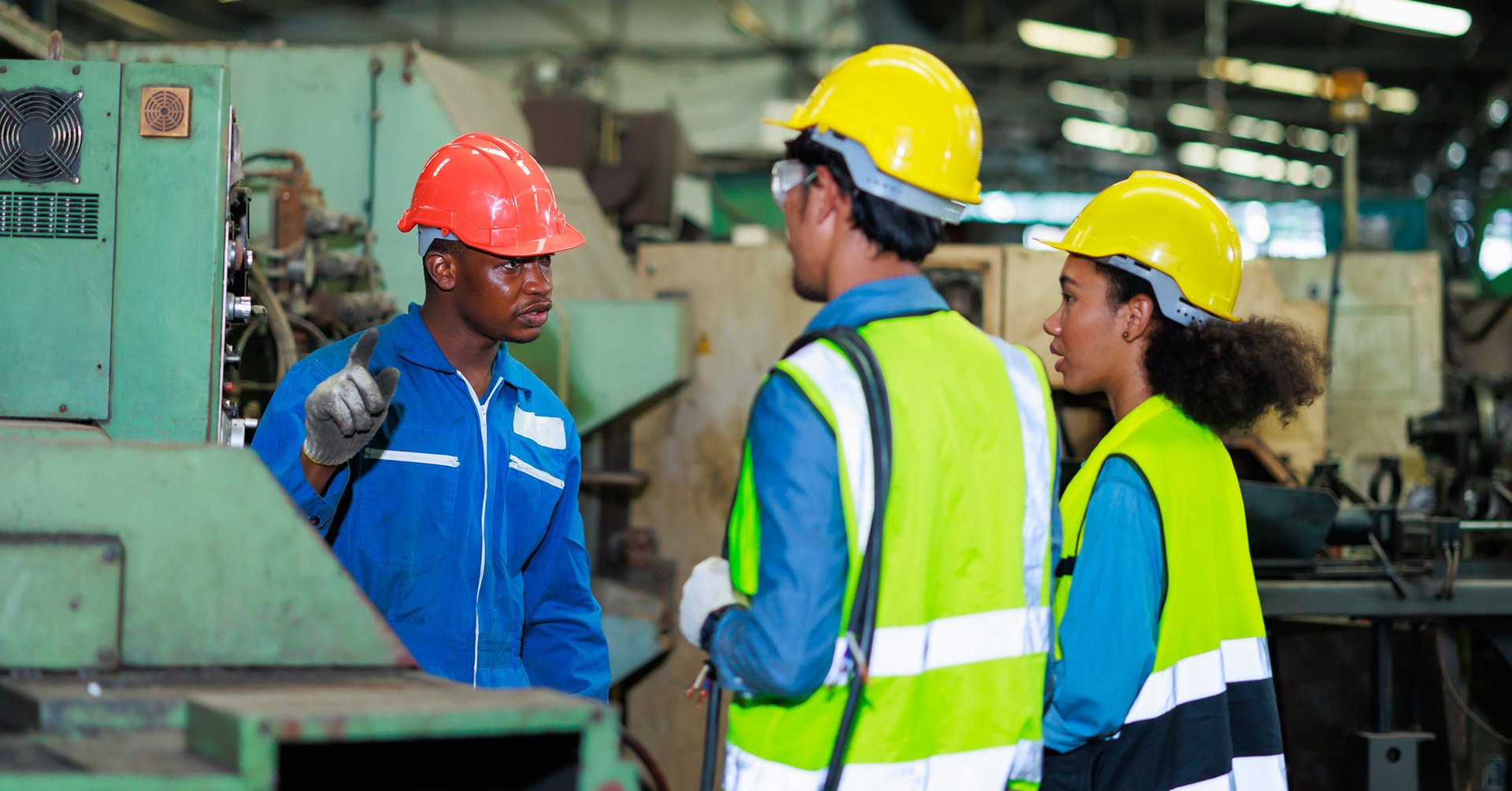
The 4 Levels of Situational Awareness & What They Mean for Your Business
The nuanced levels of situational awareness are key to crisis prevention and preparedness. You need to be able to level-up your team so they’re ready to act and react when safety and business continuity are at stake.

In June 2022, Yellowstone National Park experienced historically high flooding, forcing over 10,000 visitors to evacuate. Several roads and bridges were washed away by rockslides, making travel much more difficult.
Many homes were destroyed, but one unfortunate loss was a multi-family home that toppled into the Yellowstone River. It had housed six National Park employees, who had less than 30 minutes to evacuate before it was destroyed.
Fortunately, there were no fatalities to visitors or employees. While some people were stranded, they were eventually airlifted to safety. A big part of this success can be attributed to strong situational awareness, particularly from the National Park Service team members. If they hadn’t been tracking the escalating weather conditions, aware of how the flooding would impact the park, and quick to alert people in danger, they would not have been able to evacuate those 10,000+ employees and visitors safely.
Situational awareness in the workplace means staying alert to what’s happening around you, identifying your choices in the current situation, and being ready to take action. These skills apply to employees in every work environment, from the factory to the construction yard—and even the office. Situational awareness skills depend on practice and understanding the various levels of awareness that prepare individuals and teams to stay safe and maintain business continuity.
Are there 3 or 4 levels of situational awareness? It’s all a matter of perspective. In this post, we’ll explore how the levels of situational awareness inform your emergency preparedness, why this awareness is essential to mitigating the impact of possible threats, and how you can help employees get better at spotting risk and keeping each other safe.
Benefits of Situational Awareness for Employees and Businesses
The better your employees become at monitoring their surroundings, spotting risks, and navigating dangerous situations, the safer everyone—and your business—will be.

Empower employees to improve health and safety
Health and safety leaders can’t be everywhere all the time. By improving employees’ situational awareness, you empower them to protect themselves and their colleagues in the event of an emergency—or even everyday safety incidents.
Some situational training involves first aid education, which can help during an emergency as first responders or law enforcement may not always arrive on time in the crucial first few minutes. Other types of situational awareness training can help employees spot potential danger early on, whether it’s unsafe coworker behavior, potential misinformation, or hazardous environmental conditions.
Increase employee satisfaction
According to the 2022 State of Employee Safety Report, nearly half of working Americans who feel protected by their employers show a greater likelihood of being committed to and staying with their employers for the long term. They also have lower stress levels and a better employee experience, making them happier and more productive at work.
By helping improve situational awareness across the organization, you can show employees that you care about their safety above anything else. This is especially critical in some of the more dangerous jobs that regularly expose employees to potential threats, such as construction, shipping and delivery, factory jobs, and logging.
Mitigate risk
Organizations can better mitigate risk when they improve situational awareness. Employees will become better at identifying potential threats so they can reduce the impact or even prevent those threats entirely. You can train your employees to detect, understand, and take action in situations—even outside of their jurisdiction. This situational intelligence can reduce workplace errors, accidents, and other potential hazards.
Strengthen cybersecurity
In a world of diminishing privacy, protecting sensitive data is critical. Employees, both IT professionals and others, can better understand potential threats to cybersecurity and take action to protect the company’s digital assets.
A Matter of Perspective
What are the four levels of situational awareness? — Color code
Col. Jeff Cooper, a former Marine and firearms instructor, developed the four levels of situational awareness—which consist of color codes. Now known as Cooper’s Color Code, the different levels are meant to identify your mindset regarding the level of danger present and how you react to it. The levels can be seen as mental models to help you determine your cognitive readiness for any situation.
Code White
Level 1, Code White, means you are entirely unaware of what’s going on around you and will be unprepared for any dangerous situation that arises and threatens your safety. In a work environment, you may be on autopilot, wholly absorbed in your tasks—or distracted by your coworkers, technology, music, or other demands.
Code Yellow
Level 2, Code Yellow, is when you’re more aware, but you’re relaxed and unbothered. You’re fully present and can observe the goings-on around you in public places. This is the ideal baseline state for people to be in most of the time. You are able to react to emerging situations, but you aren’t keeping yourself up at night over potential problems.
Code Orange
Level 3, Code Orange, is when you’ve noticed something is off. You’re listening to gut feelings and keeping a close eye on a given situation to see if anything continues to develop. You are more aware of the decision-making process and are thinking about options.
At work, this might be the case if you get an email instructing you to upgrade your software by clicking on a hyperlink—but the name and email address don’t match, so you’re suspicious that this might be a potential cybersecurity threat. Or you may be working with heavy machinery that isn’t operating as it usually does. You keep a close eye on the operation, ready to spring into action in case a problematic situation unfolds.
Code Red
Level 4, Code Red, means you are springing into action. If you’ve just received an alert from work that a data breach has occurred, you take appropriate measures to secure your data and lock anything highly sensitive. If there’s a natural disaster in your area, such as a tornado or wildfire, you’re immediately evacuating or seeking protective shelter.
What are the three levels of situational awareness? — Cognitive processes
Dr. Mica Endsley, engineer and former Chief Scientist of the United States Air Force, developed a widely accepted model of situational awareness that focuses on individuals’ cognitive processes. The three levels represent ways people form situational awareness. The model also takes into account environmental factors and task factors that affect an individual’s abilities at each of these layers. These three levels are not necessarily linear and progressive; when one’s situational awareness is heightened from experience and practice, the levels are more of an integrated process.
1. Perception
At this level of awareness, you capture the details around you, tuning into all of your senses, looking for patterns, observing not just what’s in front of you but also the potential clues all around you.
2. Comprehension
At this level, you make sense of your perceptions. You identify what details are relevant in order to consider them further, depending heavily on your past experience to draw meaning.
3. Projection
At this level, you predict the threats that will manifest in the near future. Being successful at this level requires meaningful experience, but it also requires that you tap into your felt sense of how things are.
Strengthen Situational Awareness at Every Level
Every urgent situation, life-threatening or not, requires a level of situational awareness. It never hurts to improve your observational skills and risk intelligence, even if you feel pretty good about where you’re at.
Make it a goal to get every employee’s awareness (including your own) to a baseline of Code Yellow. Training gives your employees opportunities to practice their observational skills and stay in this relaxed but vigilant state.
Here are six ways you can help your employees level up their situational and risk awareness to protect themselves and the business:
1. Provide on-the-ground situational awareness training
The more safety-minded employees you have, the better. The best way to enable this readiness is by delivering situational awareness training. The training should be interactive and inclusive for all employees, no matter their occupation or experience level.
Training exercises can help your employees better pay attention in various situations. For example, you might show employees a picture of an object for one minute and then hide the picture and have them write down everything they saw. In addition to helping improve situational awareness, exercises that teach employees vigilance also improve quality assurance and general workplace safety.
2. Conduct drills and tabletop exercises
Fire drills are a great place to start—but you can go even deeper. There is a range of dangerous scenarios that might happen in a workplace, from hazardous spills to acts of workplace violence. Introducing these scenarios in a safe training environment can help employees learn how to identify these threats early and have planned emergency responses.
As with most trainings, regular and hands-on practice is necessary to keep safety skills and procedures top of mind. But it can sometimes feel challenging to schedule lengthy training exercises amid employees’ already-packed calendars. As a supplement to comprehensive annual training, micro-drills and short refresher sessions are a good way to keep employees informed on specific topics and ensure they know how to conduct themselves during emergency situations. For example, you could hold a 15-minute meeting on winter weather hazards to be aware of or conduct a micro-drill for employees to practice the “Run, Hide, Fight” technique for responding to active shooter incidents. With steady and consistent practice, it’ll become like second nature for your employees to quickly identify and respond to a potentially threatening situation.
3. Deliver first aid training and education
First aid training can improve situational awareness, enhancing employees’ readiness in unexpected situations. During a natural disaster or active shooter event, first responders may not be able to get to you immediately, which means it’s up to you and your employees to help however you can until they do arrive. Even under seemingly normal working conditions such as hot summer weather, first aid training prepares workers to observe signs of heat exhaustion—or worse—in themselves and others.
With first aid training, employees can better identify someone who needs help and administer basic care. Hold regular sessions and incentivize employees to become certified in first aid. From performing CPR to tying on a tourniquet, there are life-saving skills everyone should know.
4. Teach situational and social cues
Your employees will benefit from knowing how to read body language, notice inconsistencies in team members’ behaviors, and speak up about their concerns—even when they feel as if this involvement is not a part of their job. Teach your employees that if they see something, they should say something.
Some employees may feel uncomfortable raising concerns when they spot a problem for fear of being ostracized or penalized. It’s important to create a climate where all employees understand that safety is everybody’s job and that speaking up will never result in negative consequences. Every employee has a responsibility to the safety of their team and the business, and they’re likely to feel much more at ease about speaking up when they understand how far their own input can go toward mitigating hazards.
5. Train employees to defend against cyberattacks
Cybersecurity shouldn’t be overlooked or left solely to your IT team to shoulder. Train your employees to look out for potential threats, and regularly inform them of emerging scams. Train them to protect themselves and to report any cyber threats they observe.

6. Source and vet threat intelligence
On top of training your employees, it’s also crucial for businesses to stay aware of impending external hazards. Obtaining accurate, timely information is often difficult when a new threat arises. With so many disparate sources of raw information to sift through, it’s challenging to quickly pinpoint which threats have the potential to impact employees—especially for organizations with a remote or dispersed workforce.
Emergency communication software with integrated threat intelligence helps you get accurate information in real-time and take action to prevent potential or further damage. Especially when you can access analysts directly, you’ll feel confident about acting on reliable information and context.
A Safer Workplace Starts With Situational Awareness
Research shows that up to 90% of serious injuries and accidents can be attributed to human error. And unfortunately, many of these incidents attributed to human factors can also be related to a lack of or lapse in situational awareness.
Whatever threats you and your employees may encounter, situational awareness can help everyone navigate them much more safely. By improving situational awareness across the organization, your employees will more readily be able to reduce human error and workplace accidents, take action when disaster strikes, and help others along the way.




